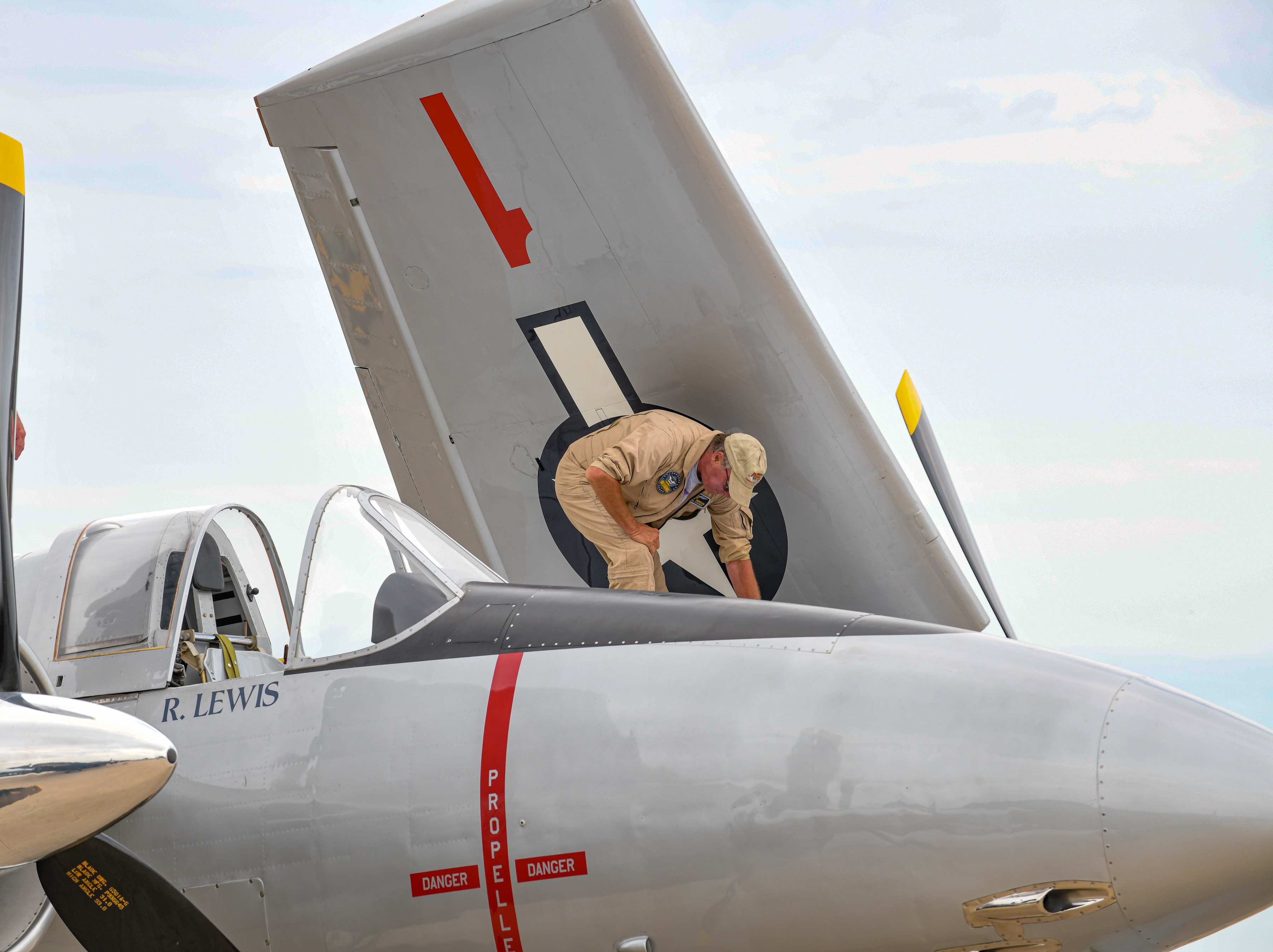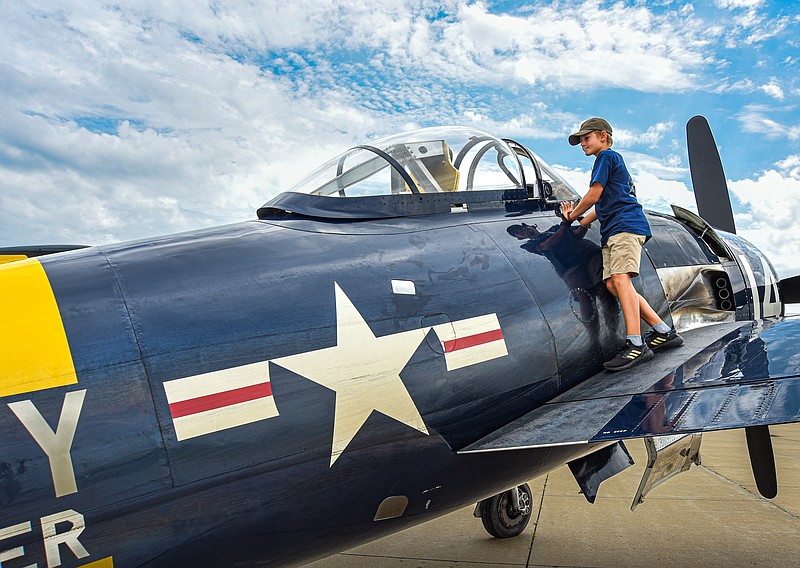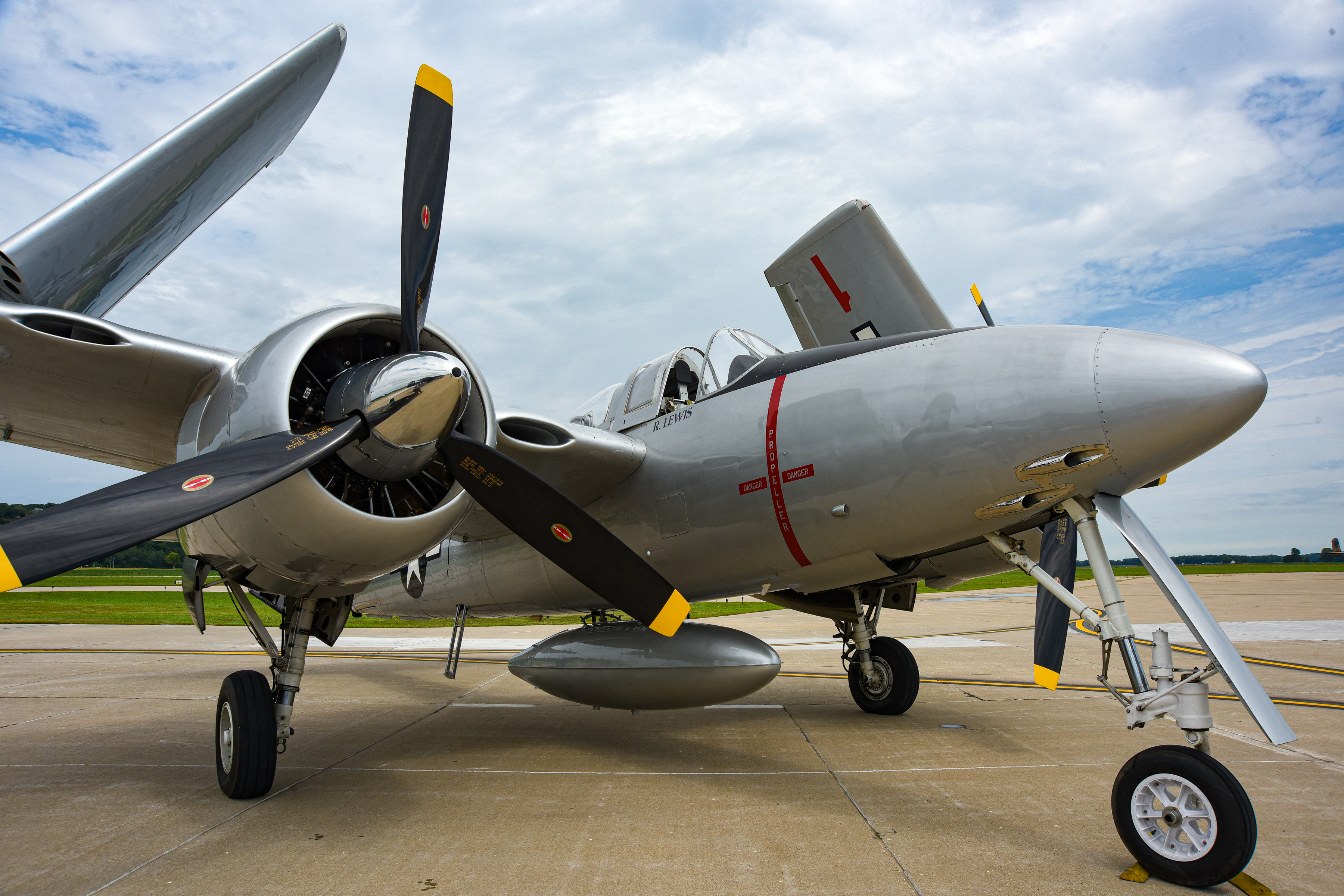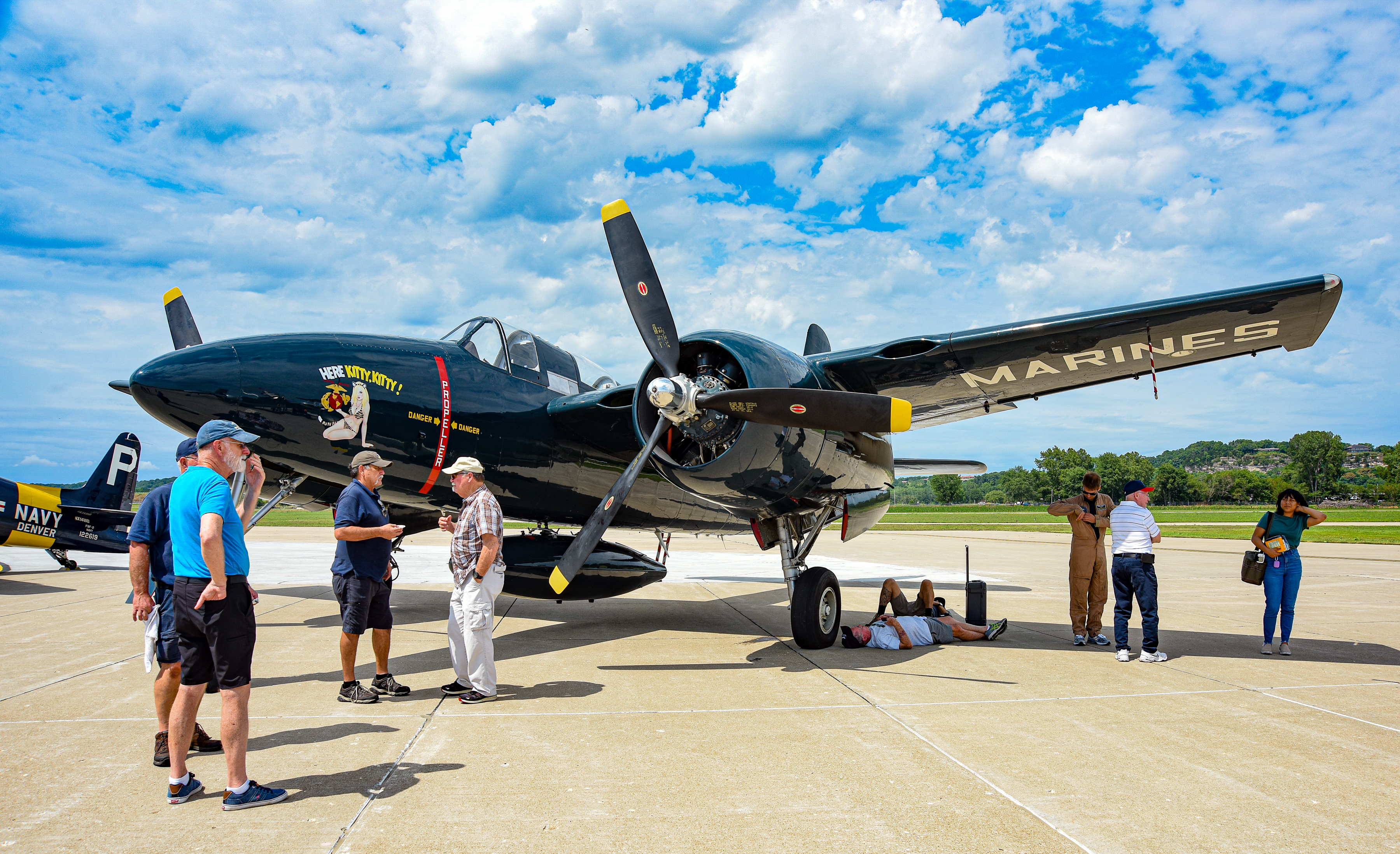Four rare World War II planes touched down Monday in Jefferson City, attracting area enthusiasts to Jefferson City Memorial Airport for a look.
"They're beautiful airplanes," said Paul Robinson, a Tebbetts resident who caught a glimpse.
Gary Burkhart, of Holts Summit, said he saw the planes circling while at Jim Lewis Tire Pros on Missouri Boulevard and decided to check it out.
"What was funny is that they had their landing gears down, but they weren't very high up," he said. "Still, it was amazing."
The four planes were a Grumman F8F Bearcat, a North American B-25 Mitchell bomber and two Grumman F7F Tigercats.
Rod Lewis, who owns the four planes in a collection of more than 30 WWII aircraft, stopped in Jefferson City to refuel and touch base with his crew, who are on their way to Oshkosh, Wisconsin, for an air show.
Stewart Dawson, one of the pilots, said rain north of Jefferson City would've taken paint off the aircraft, so they landed to refuel and grab lunch.
The pilots left Texas on Monday morning and were expecting to arrive in Wisconsin the same night. The rain delayed them a couple hours, but they were back in the air before 5 p.m.
Lewis, of San Antonio, Texas, said he had never stopped in Jefferson City before and was pleasantly surprised by the warm welcome.
Lewis owns Lewis Air Legends and has been collecting WWII planes for about 30 years.
"It's to honor the guys that flew them, first and foremost," he said. "And they're just a lot of challenge to fly, and we love to fly them, love to show them off to people who haven't seen them and to help educate the youngsters that haven't ever seen this kind of an airplane and how we won our freedom in WWII."
Lewis' father was a fighter pilot in the Air Force, he said, which sparked his interest in planes as he heard them take off and land every day from his home on the military base. He was piloting one of the two Grumman Tigercats on Monday.
"It's in your blood," he said.
Conrad Huffstutler, another pilot on the crew, said it's not everyday people see the 80-year-old planes, so they usually attract visitors when they are out and about.
There are about five or six Tigercats and about 10-12 Bearcats in the U.S. that are still able to make flight, he said.
"They look cool. They sound good. They're fast. They're interesting," Huffstutler said. "It's hard to not look and go see what it is."
Dawson said the planes are pieces of history that people like to witness.
"Nobody builds these anymore," he said while admiring one of the Tigercats. "You don't see these things anywhere. They're just not around."
Once at the airshow, Dawson said the planes will perform a couple demonstration flights. He is also doing an aerobatic routine in one of the Tigercats and another pilot is doing a routine in the Bearcat.
Huffstutler said he's also looking forward to putting the planes side by side with other WWII planes to see how design and engineering evolved throughout the war.
Lewis' planes are from the end of the war, with some having been designed amid the war but built after it was over.
Those later generations of planes were at the cutting edge of propeller-driven airplanes before the country turned its attention to jets, Huffstutler said.
"This is kind of the pinnacle of piston-engine, propeller-driven aircraft," he said.
 Julie Smith/News Tribune Pilot Stewart Dawson stands atop La Patrona, an F7F-3P Tigercat airplane Monday, July 25, 2022, at the Jefferson City Memorial Airport. This is one of four World War II vintage military planes to stop to refuel, have lunch and check the weather radar before continuing on their way to Oshkosh, Wisconsin for a large air show that opened Monday, July 25 and runs through July 31. Dawson is a pilot for Lewis Air Legends of San Antonio, Texas,
Julie Smith/News Tribune Pilot Stewart Dawson stands atop La Patrona, an F7F-3P Tigercat airplane Monday, July 25, 2022, at the Jefferson City Memorial Airport. This is one of four World War II vintage military planes to stop to refuel, have lunch and check the weather radar before continuing on their way to Oshkosh, Wisconsin for a large air show that opened Monday, July 25 and runs through July 31. Dawson is a pilot for Lewis Air Legends of San Antonio, Texas,


